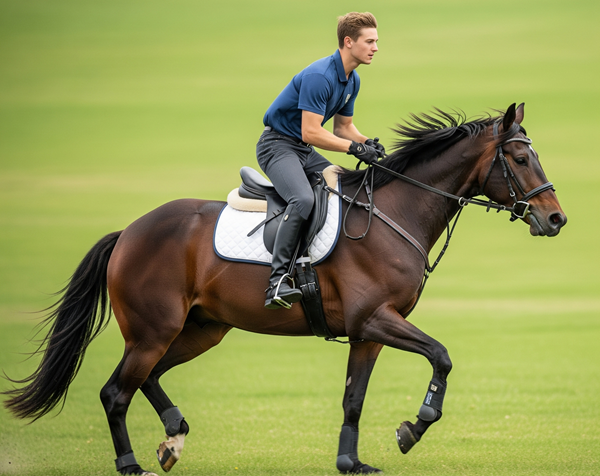
Jigging, or that half-prance that horses do when they want to set the pace for the ride, and you attempt to change it is often caused by nervousness and/or the lack of a solid foundation. Sometimes horses will do this when they are being ridden in unfamiliar areas or surroundings and if this is the cause then you can assist your horse in overcoming this anxiety by giving their feet something to do.
Giving their feet something to do makes them use the “thinking” side of their brain and causes them to remove their attention from the anxiety present in their world. More importantly once you direct your horse to use their feet, you have put yourself in control of the situation and established your leadership. It further communicates to the horse that when they become mischievous with their behavior then they must work harder than if they just got along with the program from the beginning. It also tells them that they do not need to work as hard when they make the right choice versus the incorrect choice.
Success will begin when you prepare your horse properly before you ever set one of the horse’s feet in the direction of the trail. The first step is to always use one rein rather than two when she decides to jig. When you use two reins and pull back on both reins when the horse starts to jig you are creating a resistance situation for the horse and that constant pressure causes the horse to react by tossing their head. When the horse begins this behavior, I suggest that you use one rein and begin to draw your horse into a tight circle for five to six complete circles and then repeat the process in the opposite direction. Always begin moving the horse in their direction of strength. This should relax and your horse and prompt them to use the thinking side of their brain. When they do this, they conclude that whenever they jig or head toss, they have to work harder than if they cooperated with the original request. Eventually they will surrender and stop the behavior.
If your horse fails to respond to this response, then you may be dealing with a foundation problem. If it appears your horse is not responding to this technique, then dismount and move to some extended groundwork to gain the respect and control of your horse. It will also help if you limit the number of horses that your horse is exposed to on a trail ride. A higher number of horses will only worsen the problem for an anxious horse that chooses to jig and head toss as a response to their anxiety. Your groundwork should consist of a series of exercises at different gaits that you want and not what the horse wants. Build up the gaits and then taper them off when you want, not when the horse wants. Make sure to change your direction frequently, then let them relax to absorb the experience.
Once you’ve finished the groundwork, mount up and begin toward the trail. Select trails that are wide enough to allow you to take control and move the horses’ feet if she begins to jig or head toss again. After you have succeeded riding trails that are wider and flatter than normal, then you can advance to more confined space. It is always better to provide yourself some insurance for success and be ahead of the curve rather than to be in the corrective mode of responding to the negative behavior of the horse. This gives you a better chance to catch your horse making the right choice rather than the wrong one.
Do not expect to correct jigging and head tossing in one outing. Schedule several short-term sessions a week with your horse and on each session look for improvement and less nervousness on the part of the horse. Finish at that point and then resume and look for a little more on subsequent sessions. Only once this is mastered can you consider expanding your riding group in size. For a few more tips, you can also watch this short video.
Provided by Dan Kuhn Natural Horseman Services.
Related Articles & Free Email Newsletter Sign Up
How to Teach a Horse to Ground Tie
How to Train a Horse to Neck Rein


Comment here